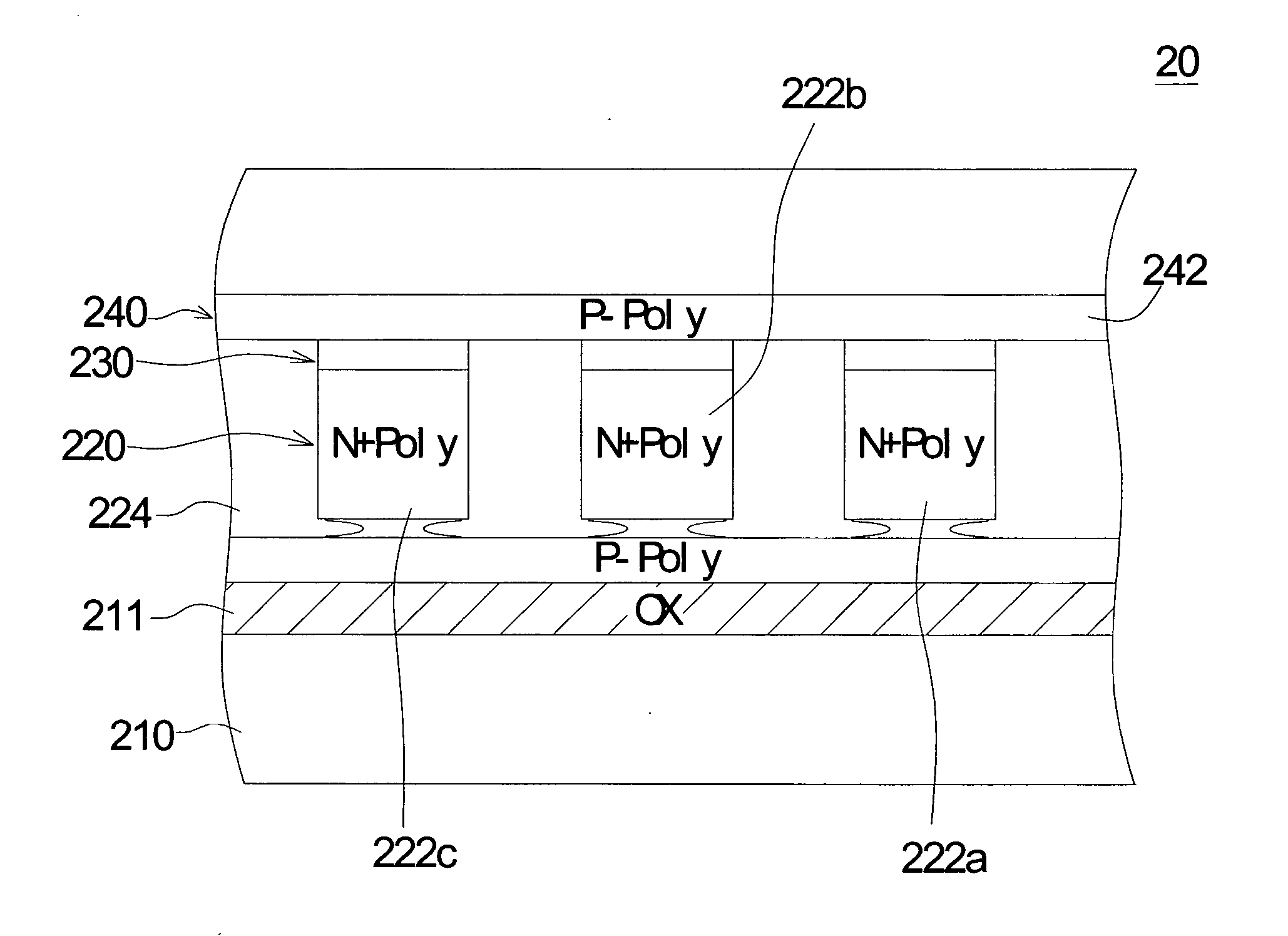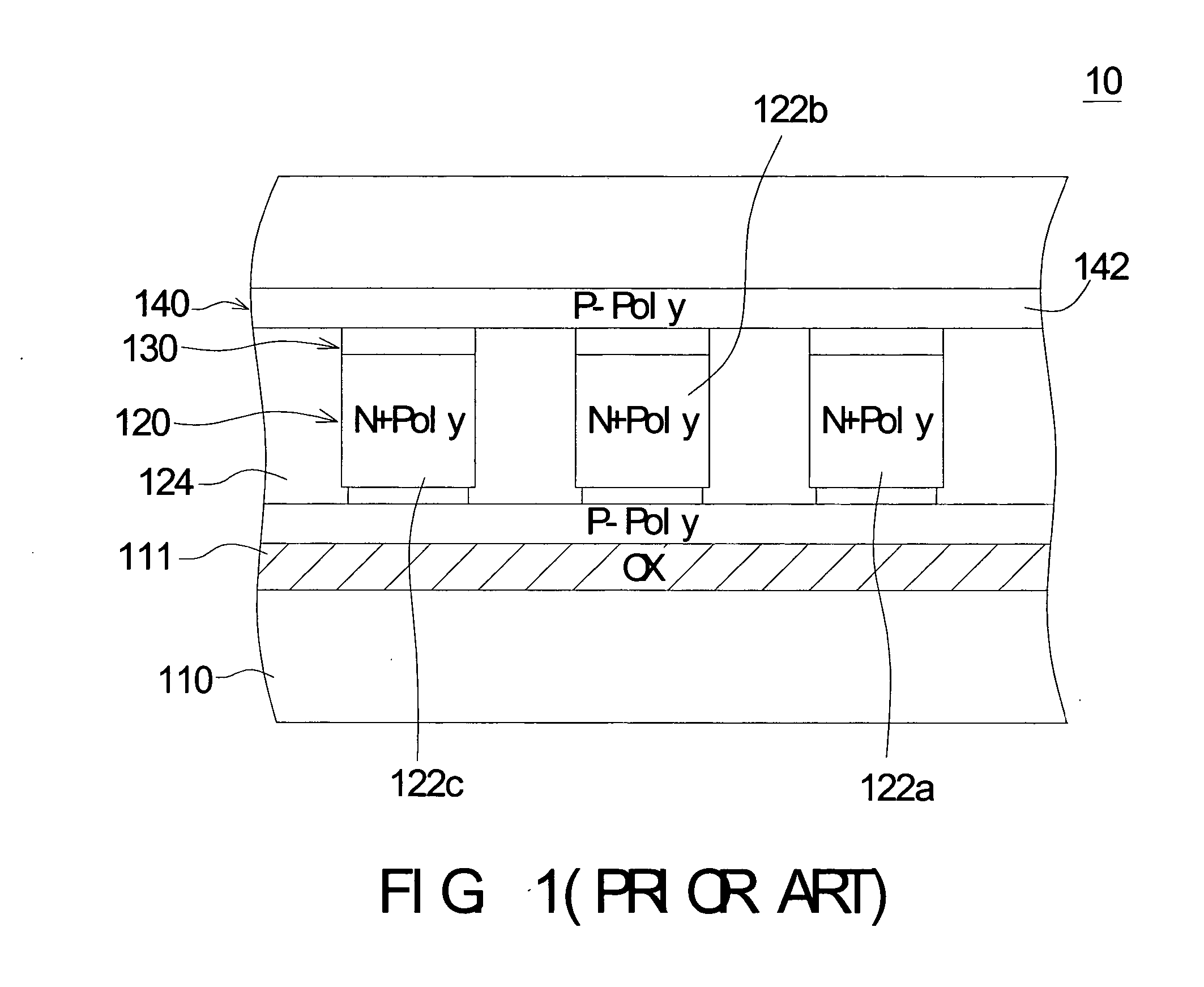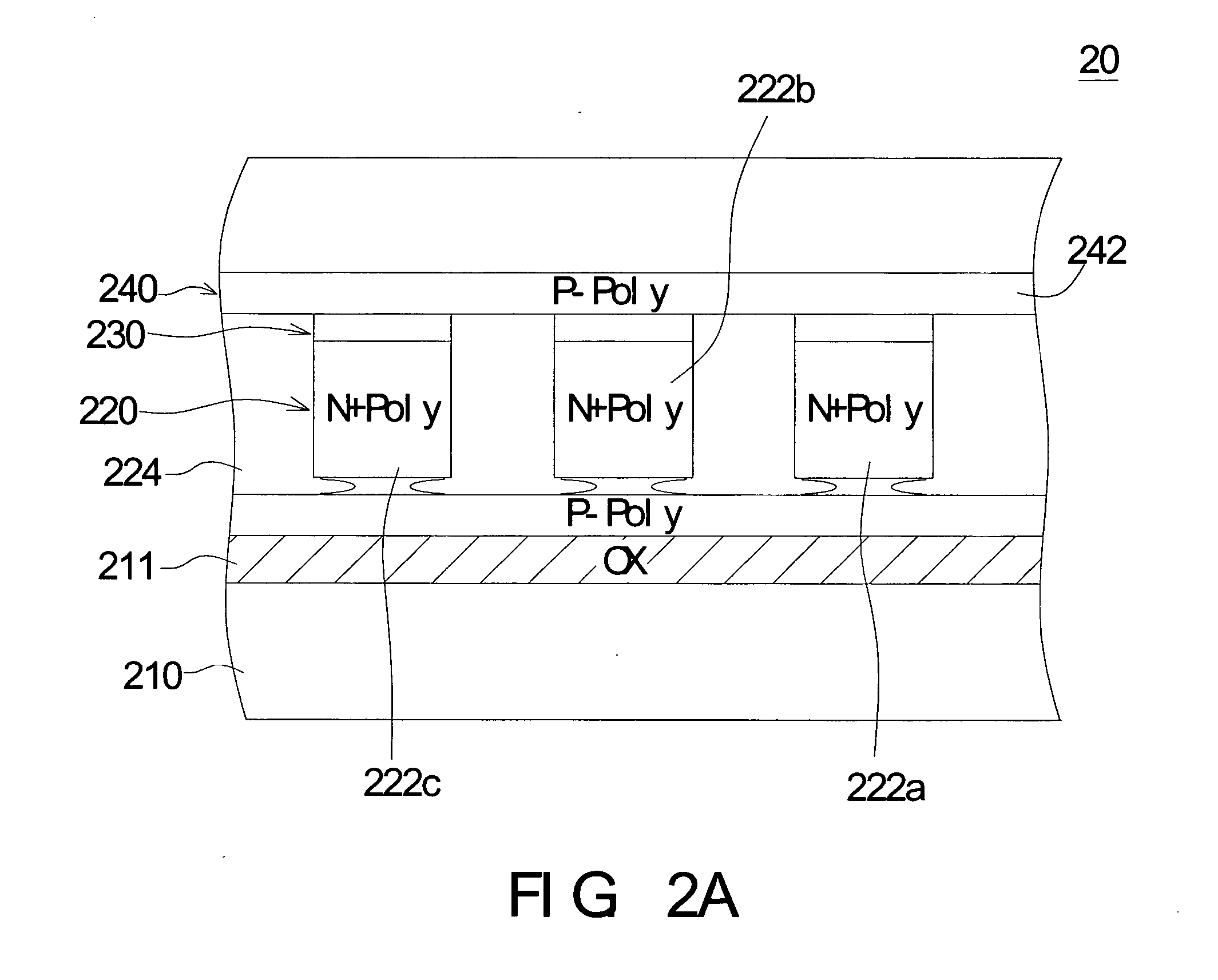3D polysilicon ROM and method of fabrication thereof
a polysilicon rom and polysilicon technology, applied in the field of polysilicon read only memory (rom), can solve the problems of difficult control of programming voltage, high antifuse breakdown voltage between two polysilicon layers, and difficult to define antifuse breakdown if the antifuse material is uniform and rough, etc., to reduce the required antifuse breakdown voltage and improve processing yield
- Summary
- Abstract
- Description
- Claims
- Application Information
AI Technical Summary
Benefits of technology
Problems solved by technology
Method used
Image
Examples
example 1
[0020]FIG. 2A is a cross-sectional view showing a 3D polysilicon ROM of the first example of the invention. Referring first to FIG. 2A, a 3D polysilicon read only memory (ROM) 20 includes a silicon substrate 210, an isolated silicon dioxide (SiO2) layer 211, a N-Type heavily doped (N+) polysilicon layer 220, a dielectric layer 230, a P-Type lightly doped (P−) polysilicon layers 240, a first oxide layer 224, and a second oxide layer 244.
[0021] The isolated SiO2 layer 211 is deposited on the silicon substrate 210, and the N-Type heavily doped (N+) polysilicon layer 220 is deposited on the isolated SiO2 layer 211. The N+ polysilicon layer 220 is further defined a plurality of parallel, separate word lines (WL), such as word lines 222a, 222b, 222c in FIG. 2A. The first oxide layer 224 is filled in the space between the word lines 222a, 222b, 222c. The dielectric layer 230 is deposited on the word lines 222a, 222b, 222c and on the first oxide layer 224.
[0022] The P-Type lightly doped (...
example 2
[0029]FIG. 3A is a flow chart showing the method of fabrication for the 3D polysilicon ROM according to the second embodiment of the invention, and FIG. 3B to 3F are cross-sectional views showing the process steps of the second embodiment of the method of fabrication for the 3D polysilicon ROM. Referring first to FIG. 3F, a 3D polysilicon read only memory (ROM) 30 includes a silicon substrate 310, an isolated silicon dioxide (SiO2) layer 311, a N-Type heavily doped (N+) polysilicon layer 320, a dielectric layer 330, P-Type lightly doped (P−) polysilicon layers 340, 350, and oxide layers 344,354.
[0030] The method of fabrication for the 3D polysilicon ROM according to the second embodiment of the invention is described below. First, as described in step 361, a silicon substrate 310 is provided. Then, as described in step 363, an isolated SiO2 layer 311 is deposited on the substrate 310. As described in step 365, a N-Type heavily doped (N+) polysilicon layer 320 is formed on the isola...
PUM
 Login to View More
Login to View More Abstract
Description
Claims
Application Information
 Login to View More
Login to View More - R&D
- Intellectual Property
- Life Sciences
- Materials
- Tech Scout
- Unparalleled Data Quality
- Higher Quality Content
- 60% Fewer Hallucinations
Browse by: Latest US Patents, China's latest patents, Technical Efficacy Thesaurus, Application Domain, Technology Topic, Popular Technical Reports.
© 2025 PatSnap. All rights reserved.Legal|Privacy policy|Modern Slavery Act Transparency Statement|Sitemap|About US| Contact US: help@patsnap.com



